Gene Fish's Blog
December 12, 2018
Best Aviation Schools in the World
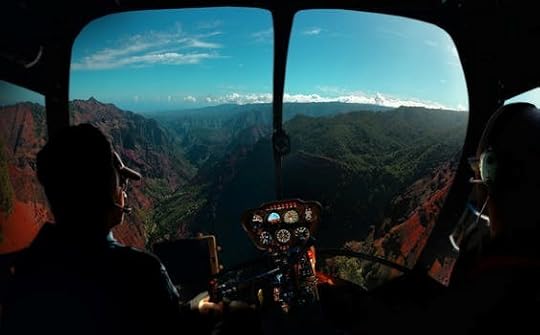
Seeking the Best Aviation Schools
The study of aviation is broad with many sub-fields to choose from. Aside from becoming a pilot you may think of a career in aeronautic engineering designing the next generation of airplanes, aviation meteorology where you help pilots decide where to fly to avoid nasty weather, airplane and powerplant or avionics mechanics who ensure the aircraft is safe to fly, and aviation computer science where specialized systems are integrated to help pilots in their tasks. Studies are offered in aviation schools in most countries around the world.
Aviation is a highly technical field. Thus, an understanding of math and physics, being able to comprehend technical information, good communication skills, leadership skills, and discipline and commitment are among the skills needed to study aviation.
Since most young people seeking work in aviation view themselves as being a pilot let’s discuss this aspect of aviation.
Getting to be a pilot is a demanding endeavor for anyone, but it is essential that courses leading to certificates and, perhaps, a college degree, is essential. Candidates for a flying position stand a better opportunity by having both the proper certificates and a degree. But above all, remember, the job of being a pilot is to safely transport passengers and cargo from one place to another, either thousands of feet above ground flying a slick jet powered airplane, or operating a small propeller-driven fixed-wing airplane – or, perhaps, a helicopter.
Pilots must accept a huge responsibility the moment a certificate is issued allowing operation of an airplane. But the first job can certainly be the beginning of a rewarding and exciting career, especially if training is completed in one of the best aviation schools in the world.
Learning any of the many tasks associated with aviation is an expensive proposition, often running into thousands of dollars. One of the best routes to a career in aviation is to join a military organization. Not only is the training paid for by the service chosen, but you are paid a salary as well. All of the United States military services offer enlisted members and officers training in career fields, including aviation.
If you are serious about a career in aviation and prefer the college route, check out aviation departments in your state colleges and universities, or those in other states. In this setting you will graduate with a degree and all of the necessary pilot certificates that will allow you to enter the aviation job market.
Private flight schools abound at most airports around the country. These schools will prepare you for entry level flying jobs where you can continue your education to higher certificates and higher paying pilot positions. Since this route does not include a college degree, the time and money required will be much less. Remember, however, to select a reputable school with a good track record of success for their students.
Because the aviation industry is a competitive industry and is highly exposed to globalization, the opportunities are high. Thus, it is always good to have a solid, sound, and good training grounded by choosing the best aviation schools you can afford. Where you train will make a great deal of difference in how you function as a pilot. High quality aviation training schools exist every where, not just in the United States. Check out some of the schools featured in the web site, AcademicCourses.com.
Here are some of the top aviation schools around the world:
Starting with the United States, these schools are Epic Flight Academy in Florida and San Diego Flight Training International at the Montgomery Field Airport in Southern California.
In the United Kingdom where the oldest independent air force is located, the Royal Air Force, the schools are the CAE Oxford Aviation Academy and the Newcastle College.
In Greece, the notable schools are Global Aviation, Skies Aviation Academy, and Olympus Aviation Academy.
In Spain, there’s FLYBYSCHOOL in León.
In the Netherlands, there is AIS Flight Academy, which combines both theoretical and practical training over a 22-month comprehensive program.
All Asia Aviation Academy is located in the Philippines, and the Asian Aviation Centre in Sri Lanka is located at the largest hangar at the Ratmalana Airport outside of Colombo.
In Africa, the Kenya School of Flying is located at the Wilson Airport in Nairobi.
These schools have some common features: strong training facilities, an excellent combination of theoretical training combined with practical training.
Over time, this list of top aviation schools in the world will see more names of notable aviation learning institutions as the industry even becomes more competitive.

The world of aviation allows you to see the world and be exposed to different people, cultures, experiences, and situations just as I had experienced. My accounts of these different situations and experiences can be read in my book, Ol’ Shakey: Memories of a Flight Engineer.
While the book is a fun read for everyone, it is also a realistic read everyone, providing an insight into the daily life of flight crew members moving passengers and cargo over long distances. You can get a copy of Ol’ at Shakey: Memories of a Flight Engineer at www.amazon.com, www.barnesandnoble.com, and other online book retailers. The book is also available on Kindle and paperback.
Follow me on Facebook or read more about my articles on the aviation industry in my blog.
References
International Student. “Best Schools to Study Aviation.” Accessed November 23, 2018. https://www.internationalstudent.com/study-aviation/best-schools-to-study-aviation/.
Prospects. “Airline pilot.” Accessed November 26, 2018. https://www.prospects.ac.uk/job-profiles/airline-pilot.
Hughes, Joanna. 2016. “Nine Leading Countries for Aviation Studies.” AcademicCourses.com, June 1. Accessed November 26, 2018. https://www.academiccourses.com/article/Nine-Leading-Countries-for-Aviation-Studies/.
The post Best Aviation Schools in the World appeared first on Gene Fish.
December 3, 2018
Top 10 Airports in the World
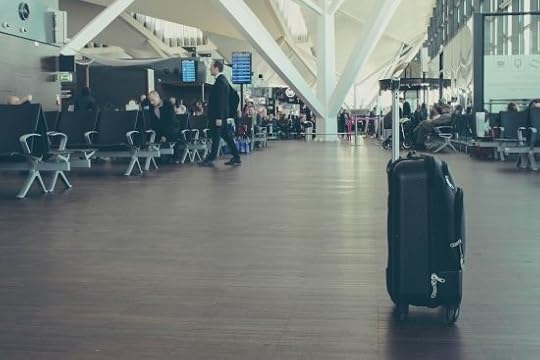
The most prestigious award for the top ten airports in the world for the year 2018 has just been announced. This award was awarded at the Skytrax World Airport Awards, a prestigious award that can be likened to the Oscars of the aviation industry. The award was said to have based the response in survey by millions of passengers. The airports were nominated by aviation customers from all around the world at the 2017–2018 World Airport Survey. Out of tens of thousands of airports all over the world, here are the top ten best airports in the world and other rewards given:
Frankfurt, Germany
The largest airport in Germany and the third biggest in Europe. From 2017 to 2018, Frankfurt Airport has been serving 98 airlines and 250 destinations in 105 different countries.
Zurich, Switzerland
Largest international airport in Switzerland. It is also dubbed as the World’s Best Airport by Passenger with the numbers ranging from twenty to thirty million.
London Heathrow, United Kingdom
The former first in the top ten busiest airport in the world, London Heathrow Airport still holds the title as the busiest airport in the UK and the third in the top ten biggest airports in the world.
Centrair Nagoya, Japan
Central Japan International Airport, or most commonly known as Centrair, is 2018’s World’s Best Regional Airport. It was reported that in 2014, passengers travelling through Centrair reached up to 9.8 million.
Munich, Germany
With a 150 retail stores and 50 food places, Munich Airport got the Best Airport in Europe award for 2018 and known as the second busiest airport in Germany.
Doha Hamad, Qatar
Placing the fifth in the top airports in the world is the most luxurious terminal complex in the world, Hamad International Airport, in the capital of Qatar.
Hong Kong
The former multiple winner of the Airport of the Year award falls on the fourth with two more awards: World’s Best Transit Airport and Best Airport for Dining.
Tokyo Haneda, Japan
Another airport from Japan gets to be a part not only in the top ten best airports in the world but in the prestigious third. Tokyo Haneda was also awarded as the World’s Cleanest Airport and World Best Domestic Airport.
Seoul Incheon, South Korea
The second placer is also a former awardee of the Airport of the Year and holds the record for the largest airport in South Korea. For this year, Seoul Incheon got the World’s Best Airport Staff award.
Singapore Changi, Singapore
For six years in a row, Changi Airport of Singapore has caught the world’s best airport award. Forbes reported that in 2017, Changi has served 62.2 million passengers with more than 373,000 landing and takeoff. Below is a photo of the Singapore’s Changi Airport.

These airports were nominated and voted by the passengers; therefore, there can never be a debate as to how they belong to the best of the best. Being a part of the top ten airports in the world is a great feat for each country since they also reflect their people and culture.
Share your thoughts with us through leaving a comment in the comment box below. You can also connect with me through Facebook, Twitter, and Goodreads.
References
Skytrax World Airport Awards. “The World’s Top 10 Airport of 2018.” Accessed on November 20, 2018. https://www.worldairportawards.com/the-worlds-top-10-airports-of-2018/.
Bishop, Jordan. “The 10 Best Airports in the World in 2018.” Forbes. March 24, 2018. Accessed on November 20, 2018. https://www.forbes.com/sites/bishopjordan/2018/03/24/10-best-airports-in-the-world-singapore-jewel-changi/#29afddf76a0e.
The post Top 10 Airports in the World appeared first on Gene Fish.
November 6, 2018
The People behind Aircraft Maintenance
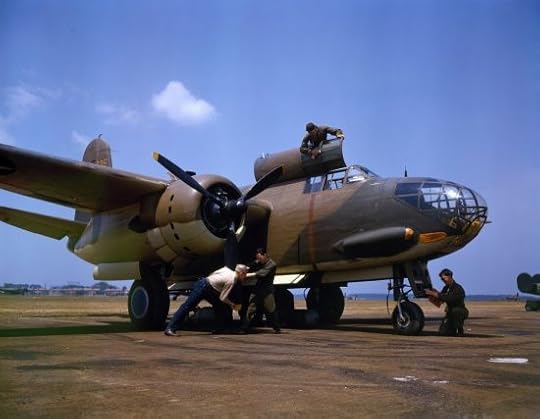
The aviation industry has a lot of people working under its wing, not just the pilot and copilot. Other than the two jobs mentioned before, the aviation industry also includes the air traffic controller, flight attendants, flight navigators, airplane inspector, sky or air marshal, aircraft maintenance technician, and many more. But for this blog, we will focus on the one of the least recognized but very important jobs in the aviation field, aircraft maintenance technician.
Aircraft maintenance requires a lot of knowledge and skill for it is one of the most critical aspect when maintaining an aircraft. It is through this process that the safety of the crew, passengers, and even non-passengers are secured. To emphasize the importance of aircraft maintenance, FAA requires that aircrafts should undergo regular maintenance and inspection every 100 hours of its flight.
Due to its great importance, aircraft maintenance jobs requires certain qualities. Let’s find out the qualities that an aircraft maintenance technician should possess to ensure the plane’s safety.
Detail-oriented person
Every detail is very important for technicians, especially in aircraft maintenance. An unnoticed loose screw on a plane may lead to a disastrous accident. This type of incident is one that every technician wants to prevent. In this kind of profession, a person should be a very keen observer to the point of being obsessed with details since a single mistake may endanger hundreds of lives.
Critical thinking
Solving problems requires critical thinking. However, in aviation, technicians are required to have a hundred times the average critical thinking skills since they are dealing with a 500-ton flying metal.
Good communication skills
Proper communication is important on every occasion. However, it is more important in aircraft maintenance. There is never a room for errors when doing technical documentations of maintenance routine; that is why communication skills play a regular role in every aircraft maintenance technician’s daily work. Oral and aural skills are also very important. An aircraft maintenance technician must be good at listening to be able to relay accurately. That way, there would be less error or none at all.
Eager to learn
Experience is the best teacher in everything. Not all problems are documented in the books read while in the four corners of the classroom. A technician should always be open to change and new knowledge.
Aircraft maintenance is a serious operation since this process evaluates the status of the plane, which ensures the safety of the passengers and crew. Not only is aircraft maintenance a noble job but it is also one of the highest paying jobs in the aviation industry. According to aviationcv.com, aircraft maintenance salary places third in the aviation industry.
A career in aircraft maintenance is not one that many would want to choose. However, this job can be very exciting and rewarding. Not only does it make a lot of money, but it gives experienced technicians a sense of fulfillment with the thought that their job keeps people safe.
My experience flying with Ol Shakey taught me a lot of lessons and good memories. My knowledge in aviation was all because of all my past experiences, and I would surely want to share my story with all. Witness my aviation journey in my book Ol’ Shakey: Memories of a Flight Engineer.
Did you learn something new and interesting today? If you have any information you want to share on aircraft maintenance, you can freely write them down in the comment box below. You can also share your thoughts through Facebook, Twitter, and Goodreads.
References:
Aviation Maintenance Technician. 2014. “10 Things About Being an Aviation Maintenance Technician You May Not Have Known.” AIM FAA Career Training (blog). March 11, 2014. Accessed on November 7, 2018. http://www.aviationmaintenance.edu/blog/aviation-maintenance-technician/10-things-about-aviation-maintenance-technician-you-may-not-have-known.
Aviationcv.com. 2015. “How to Become an Aircraft Mechanic?” Aviation blog. December 3, 2015. Accessed on November 7, 2018. https://www.aviationcv.com/aviation-blog/2015/how-to-become-an-aircraft-mechanic.
Abbott, Aaron. 2012. “What Kind of Traits Do You Need to Become a Successful Aircraft Mechanic?” Covington Aircraft (blog). January 18, 2012. Accessed on November 7, 2018. http://blog.covingtonaircraft.com/2012/01/18/why-is-plane-maintenance-so-important.
The post The People behind Aircraft Maintenance appeared first on Gene Fish.
October 29, 2018
The Tragic Story of the Missing Aircraft

Captain Zaharie Ahmad Shah, 53, and his copilot, Fariq Abdul Hamid, 27, moved the MH370 Boeing 777 to its final turn on the runway before it flew to the unknown. At exactly 1:20 AM, one of the pilots said, “Good night, Malaysia 370.” The next several months will be spent desperately looking for the missing aircraft.
Two hundred and thirty-nine passengers boarded the fated plane. This include a twenty-three-month-old baby Wang Moheng and his parents, Jiao Weiwei, 32, and Wang Rui, 35. Also aboard the plane was Philip Wood, 50, an IBM executive, who transferred his job to Malaysia shortly before the flight. It was his joy to travel to many places.
Fans of Jet Li and his movies might also know Ju Kun, a martial arts expert and Jet Li’s double for his action-packed scenes, such as The Forbidden Kingdom. He was returning home from choreographing a production.
Newlywed Dr. Yuchen Li, who also recently received his doctoral engineering degree from Cambridge University, bought a ticket to a mysterious land instead of mainland China. The rest was Amelia Earhart-type of story.
Shortly after that 1:20 AM update, the pilots were supposed to check in a routinely report with air traffic controllers based in Ho Chi Minh City. According to the Civil Aviation Administration of Vietnam, they failed to do so. All forms of communication were deactivated. The missing aircraft was assumed to have changed its course, retraced its path to Malaysia, and crashed somewhere in the Indian Ocean, which covers the 20% of the earth’s surface, or more like 5.5 times the overall size of USA.
Its disappearance sparked major response from the search and rescue teams. First, they headed over the Indian Ocean, 1,600 miles off Perth, Australia, in the hopes of finding some clues as to its whereabouts. They found debris, and some oil slicks that were believed to be parts of the plane, but these were later proved as nothing but scraps.
Soon, Australia, China, and Malaysia joined forces for the same cause. Using the latest and state-of-the-art technology and expertise, they looked for any signs of the exact location of the plane within the 46,000-mile zone west of Australia. Despite the huge effort amounting to $160-million, the mission failed, and the relatives of the victims and the rest of the world were left with further questions and wonder.
This tragic event was world news. For a few months, the missing aircraft and the names of its passengers filled the headlines of every newspaper, social media posts, and international debates. Along with the Malaysia Airlines Flight 370’s disappearance, various theories surfaced. While some were believed to have happened, such the pilot’s intentional crash and the probability of terrorism, the lack of evidence deemed these claims unacceptable.
On July 30, 2018, roughly four years after the mysterious incident, the government of Malaysia released the MH370 report that stated the impossibility of the rescue. This release intensified the interrogation and crushed the hopes of ever finding the passengers again.
It may be case closed, but for the relatives of the victims of Malaysia Airlines Flight 370 and for the rest of the world, it will remain the most intriguing mystery in the history of aviation.
Want to know the latest news and interesting trivia on aviation? Follow me on Facebook, Twitter, and Goodreads for important updates. You can also visit my website, www.olshakeyflightengineer and purchase my book, Ol’ Shakey: Memories of a Flight Engineer, to get to know my firsthand experience on flying planes during the World War.
References:
Laud, Georgina. “MH370 cover-up: What REALLY happened to Malaysia Airlines flight?” Express, August 2, 2018. https://www.express.co.uk/news/world/997407/mh370-cover-up-what-happened-conspiracy-theories-flight-mh370-malaysian-airlines.
Ramzy, Austin. “No Plane. No Remains. And Now, No Real Answers on Malaysia Airline Flight 370.” The New York Times, July 30, 2018. https://www.nytimes.com/2018/07/30/world/asia/malaysia-airlines-flight-370-report.html.
Makinen, Julie, James Queally, Carol J Williams. “MH370: Here’s what you should know about the plane’s mysterious disappearance.” Los Angeles Times, January 17, 2017. http://www.latimes.com/world/asia/la-fg-malaysia-airlines-370-story-so-far-htmlstory.html.
The post The Tragic Story of the Missing Aircraft appeared first on Gene Fish.
October 14, 2018
The Story of the Wright Brothers
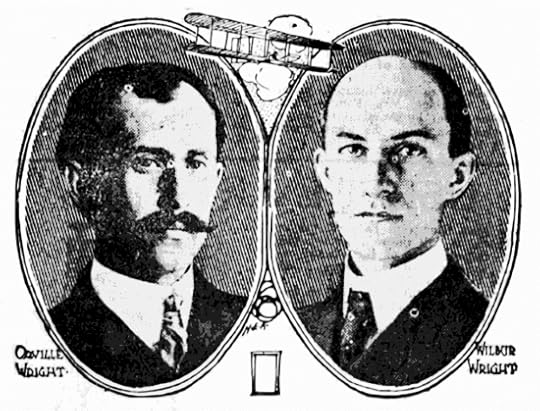
Of all history’s innovators, the Wright brothers brought a tremendous contribution to the world, particularly in achieving what seemed impossible in their time. Revered as the fathers of modern aviation, the Wright brothers Orville Wright and Wilbur Wright’s dream soared as they developed a vehicle that defied the laws of physics—the airplane.
The world owes a lot to these brothers. Risking their lives in the air, for them, failure would bring them closer to death and closer to discovery. They altered the minds of every person witnessing their first flight on December 17, 1903. Before that fateful day, they came a long and winding way, with a perseverance required to do the impossible.
Born four years apart, the Wright brothers shared a passion for aeronautics. Wilbur, the older Wright, was born on April 16, 1867, near Millville, Indiana. Four years later, Susan Catherine Koerner gave birth to Orville on August 19, 1871. Their father, Milton Wright, served as the bishop of the Church of the United Brethren in Christ.
Growing up, the brothers became fascinated with all things aero ever since their father gave them a helicopter toy—based on French aeronautic pioneer Alphonse Pénaud’s model—from work.
Wilbur loved school and excelled at it. He had so many plans, which included attending Yale University. But it all changed after an accident had left him scarred in the next few years.
On the other hand, Orville loved to be always outside of school, flying his kites. As a result, he dropped out from high school and started a printing business. Wilbur joined him after he recovered from his depression. They published the West Side News, with Orville as publisher and Wilbur as editor.
Following the death of their mother from tuberculosis, the Wright brothers opened a bicycle shop. Together, they ran the store while their sister, Katharine, assumed the responsibility of their late mother in their household.
It was around this time that Wilbur and Orville became dedicated to learning more about flying planes. With the news of consecutive deaths due to flight failures by other enthusiasts, the siblings were convinced that they could build better planes and fly them too. This idea fueled their desire to build their first successful planes.
They turned their bicycle shop into a workshop to construct the never-before-seen planes that would take them to the heights of their dream. They took their models in Kitty Hawk, North Carolina, where the windy weather and the vast, dry land provided the perfect setting for their test flight.
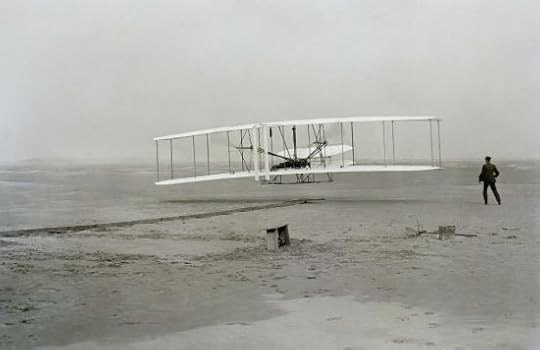
For their design and structure, the Wright brothers took inspiration from the birds’ flight. As they closely observed, birds angle themselves in a way that will keep them balanced. Countless flights, crashes, improvisations, flights again, and crashes took place. On December 17, 1903, their labor bore fruit at last. On that day, the first motor-driven airplane owned the skies. When Wilbur flew 852 feet in 59 seconds, the close-knit brothers knew the world would never look at the skies the same way again.
Ironically, their achievement brought more criticism than applause. Competitors and fellow aviators commended their miraculous flight; still, others would not believe them. The government was out of the question; they had funded so many failed experiments—so much so, they lost faith in such endeavors. It was at this time when they decided to try their luck in Europe. And luck they did find.
Soon, their names were the headlines on all newspapers local and abroad. With Europe, particularly France, chasing their invention, the federal government finally made their move and offered the brothers an opportunity to further improve their work and make progress in transportation.
It was success after success, flight after flight after flight. They became a worldwide phenomenon in the next few years. Their passion pushed them further and made them heroes of their generation.
However, the happy times were cut short when an unfortune event befell the family. Wilbur died in 1912 from typhoid fever. With one of the Wright brothers gone, there was a major change of leadership in their firm, the Wright Company.
Orville carried on the business until he sold it in 1915, having no interest in the business side of flying. In the next thirty years of his life, he worked and served in aeronautics committees. He received awards in behalf of his brother and lived the life of a role model for other dreamers. On the January 30, 1948, Orville Wright died of heart attack.
Heroes or otherwise, the Wright brothers undoubtedly left a permanent mark. Their contribution to modern aeronautics remains at the top of history’s greatest success stories.
References:
Biography. n.d. “The Wright Brothers.” Accessed October 4, 2018. https://www.biography.com/people/groups/the-wright-brothers
The post The Story of the Wright Brothers appeared first on Gene Fish.
October 7, 2018
Avionics’ Effect on Aircraft Ground Handling
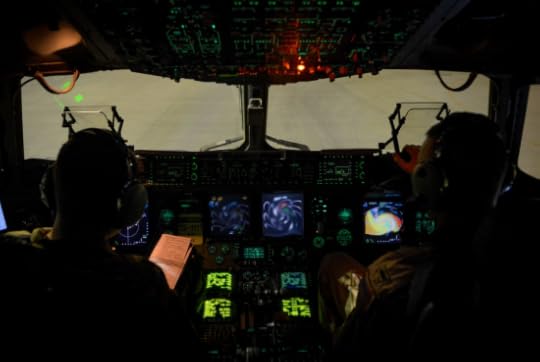
Now that avionics are fast becoming the standard in aviation, the task of servicing an aircraft while it is grounded has grown by leaps and bounds from just merely being aircraft ground handling signals. This development requires personnel in aircraft ground handling to be involved in research and development to acquire knowledge and skills to ensure these devices function optimally and ensure passenger safety and comfort.
The aircraft ground handling manual is expected to contain more airworthiness directives (AD), which serve as basis in issuing corrections when necessary based on the result of supplementary structural inspection program (SSIP) by the US Federal Aviation Administration. These must be developed in proportion to innovations and inventions. Thus far, reports show that AD-based corrections have covered communications equipment, flight control, and cockpit instrument panel navigation only.
Nowadays, avionics systems also cover the display and management of multiple systems and the hundreds of systems that are fitted to aircraft to perform individual functions. As reflections of the assumption, aircraft ground handling equipment integrated with avionics focuses on safety. But this may be a long shot, considering that this assumption stems from inadequate technical expertise. Another is a passive assurance that the margin of error is minimal. Hence, when accidents happen, those are the only times when corrective ADs issued by FAA are discovered as inadequate.
Considering this wide array of avionics and cutting-edge technologies on the rise—like translation technology, startups and scaleups, Internet of things, cybersecurity, biometrics, blockchain, artificial intelligence, robotics, etc.—is there adequate aircraft ground handling and support equipment, expertise, and accountability in cases of malfunctions? Generating more aircraft ground handling procedures seems to be made obsolete by which the speed of electronic and technical innovations and inventions integrated in the workplace.
This posits that aircraft ground handling personnel hold the key. Aside from automatically training them as soon as avionics are integrated in their services, their active participation in research and development toward standardization, rules, and regulations is encouraged. They stand in the gap to attain the goals to ensure a safe, smooth, comfortable, and timely departure and arrival, as well as cost efficiency, fewer delays, and excellent service.
In summary, aircraft ground handling personnel must not only be excellent in basic aircraft servicing and ground handling but must be equipped with knowledge and skills in avionics, which also affects the training for new recruits and in aviation industry regulations.
Learn more about aircraft ground handling through an experienced veteran pilot and go over the pages of Ol’ Shakey: Memories of a Flight Engineer. Book copies are available at online bookstores. To learn more about the author and his work, visit www.olshakeyflightengineer.com/blog.
References:
Evans, David. 2000. “Safety in Avionics: Avionics Safety, Real or Illusory.” Avionics International, August 1. Accessed October 1, 2018. https://www.aviationtoday.com/2000/08/01/safety-in-avionics-avionics-safety-real-or-illusory/
Future Travel Experience. 2018. “Future of Baggage: How E-tags, Delivery, Services, Tracking and Robotics Could Redefine Baggage Processing.” Baggage. Accessed October 2, 2018. .
September 30, 2018
The Ins and Outs of an Aircraft Engine
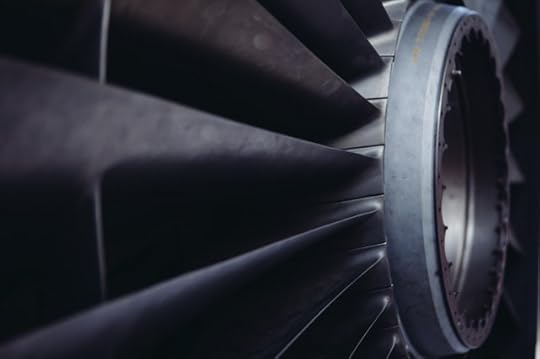
You may wonder how something as heavy as an airplane seems to fly with ease. Spot your answer by looking at the aircraft engine, placed above, below, or near its wings.
But before we begin exploring aircraft engine parts and uses, it’s important to take note that aircraft engines are classified into two different types. Let’s get to know them and see how they differ from one another, from design to purpose.
The Piston Engine
This classic starts off this countdown. This type, also known as a reciprocating engine, was the sole aircraft engine until the birth of the first turbine-powered aircraft in 1939. It has one or more cylinders. Each one contains a fitted piston connected to a crankshaft through a connecting rod. Each can freely move back and forth within the cylinder.
Upon the insertion and ignition of fuel within a cylinder, the hot gases expand and drive the piston forward, moving the connecting rod forward and turning the crankshaft. The crankshaft’s rotation pushes the piston back inside the cylinder and restarts the cycle; its movement converts the piston’s reciprocating linear motion into a rotating one, which drives the propeller.
Although its use reached its peak during the Second World War, this aircraft engine stands the test of time as it’s still being used by some today for private and business purposes due to efficient performance and low cost.
The Jet Engine
Number two on this list is the jet engine. Although its invention dates to around 150 BC, it wasn’t until the 1950s when its use became widespread. Jet engine aircrafts move due to a great force from a powerful thrust, causing them to fly fast. Most (if not all) commercial and military planes use this engine.
Alternatively called a gas turbine, most jet engines have front compressor sections (made of fans) which sucks air in. Upon compression, the air travels through a combustion chamber and gets sprayed with fuel and ignited. The gases expand and pass through the nozzle (located at the back), which causes the engine and the aircraft to move forward.
Much like aircraft engines in general, jet engines are categorized into different types as well (turbojet, turboprop, turbofan, turboshaft, and ramjets).
If you’re a pilot torn between these two engines, you may take other things (cost, efficiency) into consideration if ever you are to choose one among the other. Whatever your choice of aircraft engine may be, make sure that it will suit your needs.
What are your opinions on these two aircraft engines? Share your thoughts by leaving a comment below. You may also voice them through Facebook, Twitter, or Goodreads. Learn more about aircrafts by getting a copy of my book, Ol’ Shakey.
References
Bellis, Mary. n.d. “Different Types of Jet Engines.” ThoughtCo. Last modified April 12, 2017. Accessed September 26, 2018.https://www.thoughtco.com/different-types-of-jet-engines-1992017
Bellis, Mary. n.d. “Learn How a Jet Engine Works.” ThoughtCo. Last modified February 28, 2018. Accessed September 26, 2018. https://www.thoughtco.com/how-a-jet-engine-works-p2-4075315.
Bellis, Mary. n.d. “The History of the Jet Engine.” ThoughtCo. Last modified September 24, 2018. Accessed September 26, 2018.https://www.thoughtco.com/history-of-the-jet-engine-4067905
Plaehen, Tim. n.d. “A Thorough Look at the Types of Airplane Engines.” Bright Hub. Last modified August 15, 2010. Accessed September 26, 2018. https://www.brighthub.com/science/aviation/articles/81501.aspx
Shoreline Aviation. 2012. “Piston Engine Aircraft vs. Turboprop Engine Aircraft.” Accessed September 26, 2018.http://www.shorelineaviation.net/news—events/bid/50442/Piston-Engine-Aircraft-vs-Turboprop-Engine-Aircraft
The post The Ins and Outs of an Aircraft Engine appeared first on Gene Fish.
September 10, 2018
Safety Tips for a Graceful Touchdown
Every pilot needs to know these safety landing information
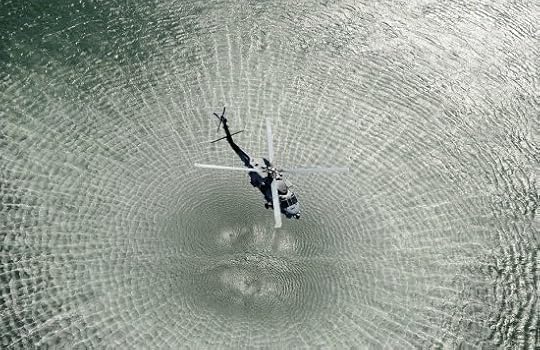
Landing is one of the most crucial phases in flying, and safety is often highlighted when performing this flight phase. Hard landing was said to be credited for the highest number of accidents among large Western-built commercial jet airplanes. Boeing Aircraft Aviation Safety Department also said that landing accidents resulted in approximately 20 percent of civilian fatalities. This only means that aviation pilots should take aircraft landing very seriously to ensure the safety of the people.
Here are safety landing tips that pilots can keep in handy for a graceful touchdown:
Speed control
A good landing starts even before the aircraft touches the ground. Upon landing, pilots should use the suggested speed by the flight instructor or aircraft manufacturer. A fast speed may cause the aircraft to hover or float above the ground. In some situation, pilots choose to lower the nose of the aircraft which may result for the aircraft to porpoise. On the other hand, slow speed in landing may result in the aircraft to land short or may stall above ground.
Do not be too relaxed
Even seasoned pilots may experience a moment that they are too comfortable after a long flight when approaching the landing phase, but this should not be the case. Even if approaching the last phase, every pilot should not let their guard down. Emergency situations may still occur during landing that can cause the pilot to lose control of the aircraft. Whatever you do, always be on guard when you are in the cockpit to ensure everyone’s safety.
Choose a good landing point or touchdown zone
This tip is mostly applicable for helicopter landing since helicopters are quite demanding on their landing area. While en route, pilot should have requested a safe helicopter landing zone A helicopter landing safety officer (HLO) will be in constant communication with the aircraft commander or pilot. During the operation of the helicopter, the HLO is responsible of the safe use of the helideck.
Master your flare
Flare is the maneuver during landing wherein the nose of the plane is raised to slow the descent rate and stabilize the attitude for touchdown. For helicopters, the flare is used to reduce both vertical and horizontal speed for touchdown.
Timing your flare is very difficult. Once you get your speed in control, one way of timing your flare is through closely observing the runway. Upon the moment that the runway expands or zooms in on the screen, it is the perfect time to flare.
Though these safety tips are commonly advised to pilots, they are no good when merely memorized. A pilot should always practice achieving a graceful touchdown; the best teacher is always experience. Once you’ve practiced enough, everything will most likely to go smoothly. Always remember that the key to becoming a great pilot is patience.
Learn more about flying through an experienced veteran pilot. Fly over the pages of Ol’ Shakey: Memories of a Flight Engineer. Book copies are available in selected online bookstores.
Share your flight stories, aviation knowledge, or any thoughts in the comments section below. You can also connect with me through Facebook, Twitter, and Goodreads. Have a nice day!
The post Safety Tips for a Graceful Touchdown appeared first on Gene Fish.
August 19, 2018
Filing a Flight Plan: The Basics
What do operators need to do when filing a flight plan form?

Aviation isn’t just about taking the skies through a fancy airplane. Operators are required to fulfill tons of paperwork, which range from flight schedules, records, and reports. One of their must-have files is the flight plan.
So why is this document important?
For starters, the Merriam-Webster dictionary defines flight plan as a usually written statement (as by a pilot) of the details of an intended flight (as of an airplane or spacecraft) usually filed within an authority. The flight plan assures accountability to pilots’ ends as it contains the necessary information on their trips. If they don’t turn a flight plan form in, they’re not allowed to fly.
Take note that there are different types of flight plans. The Federal Aviation Administration (FAA) has various types of plans that differ in purpose. Regardless of flight type, operators should always have the initiative to submit their plans. If something was to happen to them (not showing up 30 minutes after estimated time of arrival, for example), the document will help authorities locate and rescue it. Think about it: missing pilots who have filed flight plans are found within an average of four hours sooner compared to the ones that did not comply.
When filing a flight plan, here are a few important reminders:
Capital letters should be used. Unless a field is not divided into spaces, only one letter should occupy each space.
Every information should only be inserted in allotted spaces or fields. If there is an excess field, it is recommended to leave it blank.
When referring to time, it must be reported in four figures such as1330, 2100, etc.
When possible, file flight plan Although late filings are sometimes inevitable, it is best to submit early to avoid any delays. Recommended times are one day prior to flight, the morning of the flight, and 0800 (EST).
Operators should never forget to open their flight plans, or they will not be covered. They should also remember their contact person and how they’ll close their plan. Should confusions arise on closing the plan, they may ask their briefer upon filing.
If flight plan changes are made mid-flight, operators should inform specialists about their original filing date. This tip is crucial especially for flight plans filed for consecutive cross-country trips.
Think of a flight plan as a checklist—if all the needed boxes are ticked off, it means that operators have done their homework.
If you’re interested in learning more about aviation, my book, Ol’ Shakey: Memories of a Flight Engineer, should be able to help you out. For more updates, you may follow my Facebook, Twitter, and Goodreads profiles.
References
Miller, Wally. “File a Flight Plan.” Aircraft Owners and Pilots Association. Accessed July 18, 2018. https://www.aopa.org/training-and-safety/students/crosscountry/articles/file-a-flight-plan.
FileSmart. “File Early.” Accessed July 19, 2018. https://filesmart.org/file-early/.
SKYbrary. “Flight Plan Completion.” Last modified May 10, 2018. Accessed July 19, 2018. https://www.skybrary.aero/index.php/Flight_Plan_Completion.
The post Filing a Flight Plan: The Basics appeared first on Gene Fish.
August 12, 2018
Flying Airplanes through the Capital City
What you need to remember when flying an airplane through Washington, DC

Special Flight Rules Area or SFRA are regions in the United States of America that applies special regulations concerning airspace classifications, speed restrictions, and other aviation technicalities. One of the regions with SFRA is an area in Washington, DC. Due to massive terrorist attacks, especially the occurrence of the September 11 terrorist attack, the Washington, DC, Air Defense Identification Zone (ADIZ) and Flight Restricted Zone (FRZ) was established. This prevents flying airplanes or other aircrafts to freely fly within the area without identification. It was first operated as a temporary flight restriction (TFR), and later, in February 17, 2009, FAA developed this rule. The rule is now defined by 14 Code of Federal Regulations (CFR) Part 93 Subpart V known as the Washington, DC, Metropolitan Area Special Flight Rules Area (SFRA).
In a lateral view, SFRA is the 30-nautical mile radius from the DCA VOR/DME and the vertical airspace from the surface up to, but not including, Flight level 180. This is an old image of ADIZ reference points.
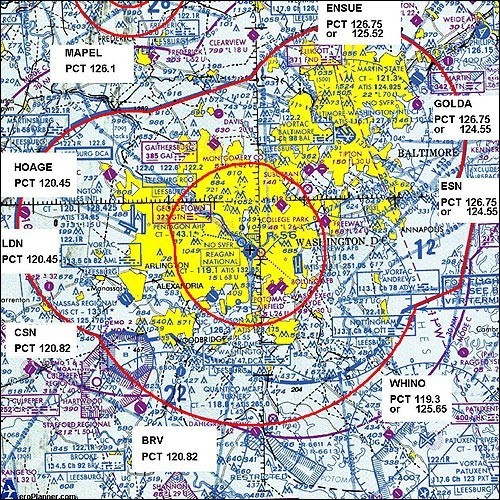
Learning the precedents in Washington, DC, SFRA will take a whole course to master. However, it is best to know these flight restrictions so as to further understand the safety measures that are practiced in the capital city. As an introduction, here are general rules, regulations, and procedures upon entering and flying within the DC SFRA.
SFRA General Rules
To be able to fly in any part of DC SFRA, these rules should be applied:
Pilots must file a plight plan for both Instrument Flight Rules (IFR) and Visual Flight Rules (VFR).
Flight requires an operable two-way radio and altitude-reporting transponder
A discrete transponder code should be obtained before entrance
SFRA clearance excludes flight following, or entry into any controlled airspace
Speed restrictions
Within 60 nautical miles-VFR aircraft restricted to 230KIAS or less
Inside the SFRA-VFR aircraft restricted to 180KIAS or less
A very important reminder when entering and flying an airplane within SFRA: Never squawk 1200!
Emergency Procedures
There are times that things do not go as planned when flying in an airplane. Upon entering—or even merely passing through—SFRA, these emergency procedures should be observed in the event that intercepts or radio and transponder failure occur.
Intercepts
Remember/Review the AIM intercept procedures in Sections 5-6-2 and 5-6-4.
If there is no connection with the Air Traffic Control (ATC), these procedures should be performed;
Squawk 7700
Tune to 121.5
Do everything and anything possible to establish communication
Follow all instructions
Radio Failure
For Instrument Flight Rules—Continue with the flight in accordance to the “lost communications” procedures.
For Visual Flight Rules
Squawk 7600
Leave the area through the nearest lateral route
In an instance that the plane is exiting SFRA and the departure area is closer than the boundary, the pilot should return the aircraft to the departure airport.
Transponder Failure
Contact ATC, report the problem, and request for instructions
When the ATC is incommunicable, follow the radio failure procedures
The Washington, DC, Special Flight Rules Area is established to strengthen the security of the federal city. It is the location of Pentagon and White House which houses our defense headquarters as well as the nation’s leader. That is the reason why airplane flying rules are established, and it is the pilot’s responsibility to learn them by heart and comply religiously.
What do you think of the special regulatory flight rules in Washington, DC? Share us your thoughts by posting a comment below. Or you can share them with me through Facebook, Twitter, and Goodreads. If you want to know more about flying airplanes, especially flying a Douglas Globemaster C-124, grab a copy of my book, Ol’Shakey. Have a good day!
References:
AOPA. “Air Traffic Services Brief—FAA Special Awareness Training for the Washington, D.C., Metropolitan Area.” Advocacy. Accessed July 17, 2018. https://www.aopa.org/advocacy/advocacy-briefs/air-traffic-services-brief-faa-special-awareness-training-for-the-washington-d-c-metropolitan-area.
Federal Aviation Administration. “Special Awareness Training: Washington, DC, Special Flight Rules Area.” Courses. November 30, 2011. Accessed July 17, 2018. https://www.faasafety.gov/files/gslac/courses/content/55/707/SFRA%20Course%20Notes%20%20111130.pdf.
The post Flying Airplanes through the Capital City appeared first on Gene Fish.



